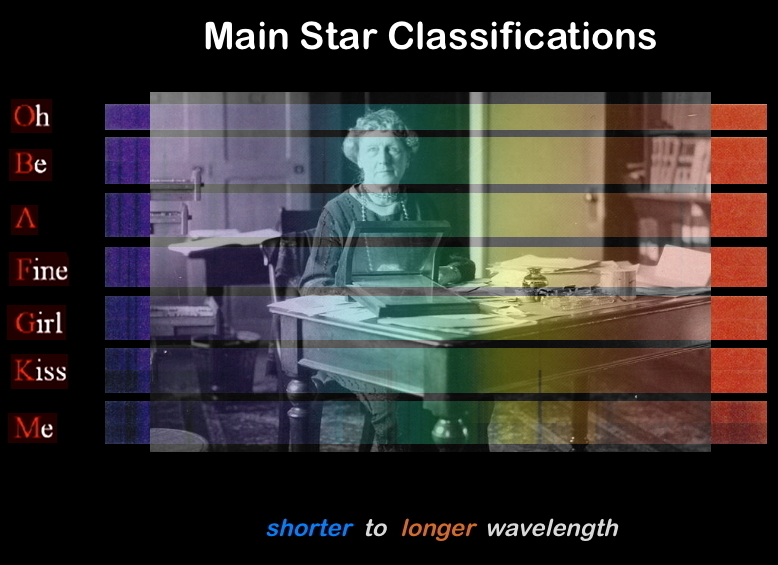Celestial Computer
On December 11, 1863, American astrophysicist Annie Jump Cannon was born. She learned about constellations from her mother. However, from a fever early in her life, Cannon was hearing impaired. She studied physics at Wellesley and took graduate courses in astronomy there. She acquired skills in spectroscopy and photography. She enrolled in courses at Radcliffe that gave her access to the Harvard Observatory.
The photography part was huge because a photo could capture the spectrum of stars. The spectrum was a Newton contribution since he discovered that a prism could split white light into colour bands. Others had discovered colour wavelengths and measured each bandwidth. Fraunhofer had noticed dark lines in the sun’s spectra, and, just before Cannon was born, Kirchoff had shown these lines were unique signatures of chemical elements. Very cool! That meant a photograph of a star’s spectrum could yield information about its composition as well as its temperature. Pretty much all the star information you might want in a black and white print!
Cannon joined other women at Harvard doing their computations about stars from a wealth of photographic plates. She applied the latest thinking to her analysis. By measuring signature lines of unique spectra in the systematic series of photographs taken over many years at the Harvard Observatory, she could see whether a star was approaching or moving away from Earth and, therefore, which were young, hot stars and which were older, cooler stars.
Examining and incorporating the analysis of stars achieved before her entry to the task, Cannon eventually revised and replaced previous systems and, determining the star’s spectral features, classified stars by their temperatures. The hottest stars are termed O-stars, the next cooler are B stars, then A, F, G, K, and finally M-stars. Sirius for example, is an A-type star. Our sun is a G. “Oh! Be A Fine Girl, Kiss Me!” was the memory device for her star-classifying colleagues. Cannon’s classification system is still used.

She had a great eye and a great memory for a star image and a spectral pattern. In Cannon’s professional career of over forty years, she classified well over 250,000 stars, a record no one else has ever achieved. Cannon was the first woman elected an officer of the American Astronomical Society. She received the Henry Draper Medal, the National Academy of Sciences, for her work in cataloging the spectra of stars. The Annie Jump Cannon Award in Astronomy, the American Astronomical Society, is given annually to a woman resident of North America for distinguished contributions to astronomy.
B Bondar / Real World Content Advantage